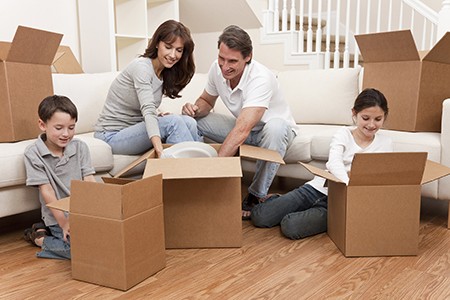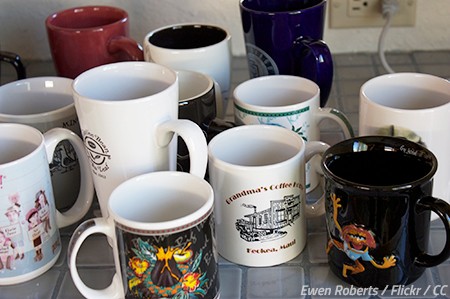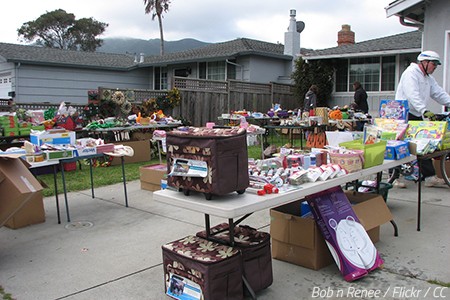 As soon as your move becomes only a matter of time, one of the first things you’ll need to do is start packing up your things for safe transport. You’ll just have to concentrate all your energy and time on packing up your home for moving – the toughest task in your moving checklist, and anyone’s to-do list for that matter.
As soon as your move becomes only a matter of time, one of the first things you’ll need to do is start packing up your things for safe transport. You’ll just have to concentrate all your energy and time on packing up your home for moving – the toughest task in your moving checklist, and anyone’s to-do list for that matter.
The truth is that each day that goes by without you packing at least several boxes is a wasted day, and that single could cost you dearly when it’s time to move out. Once you have a deadline, you are expected to work around the clock to be completely ready for Moving day. Remember that packing up your things for a move is a process that takes a long time to complete and you may run into time trouble… unless you do know how to pack QUICKLY for a move.
An essential question before you begin the packing task is what to pack when moving. You know that you need to start boxing up those household items but you’re just not sure the order in which you should do it. And besides, some household items you’re not allowed to pack and move with you, so you’ll also need to be careful what you put into those cardboard boxes as well.
Here’s what to pack in boxes when moving to a new home:
What NOT to pack when moving
When you wish to know what to pack when moving cross country, then the first thing you should do is familiarize yourself with the things you must NOT pack for a move. And once you know all the forbidden items to pack and move, your packing task will become a bit easier since you’ll only be left with the stuff you can safely pack and move with you to the new home.
In short, you’re not allowed to pack
- hazardous goods (flammable, explosive, and/or corrosive);
- perishables – food items that are likely to go bad during a long-distance move; and
- plants that have a minimum chance of surviving a move across the country.
Dangerous household goods
Don’t take any risks packing and moving any items that are hazardous in any way – flammable, explosive, and/or corrosive. Bear in mind that safety – your personal safety and the safety of the people around you – should be your number one priority during a house move.
Hazardous items can pose a serious risk to the health and life of the participants in a residential move, so you should get rid of such dangerous goods before you start packing up your things. Professional moving companies have detailed lists of things you must not pack when using their services, so why should you waste precious time in boxing items that are forbidden for transport in the first place?
If possible, use up most hazardous items – gasoline, petrol, oil, pesticides, fertilizers, paints, chemicals, propane tanks, and even cleaning supplies prior to Moving day so that you won’t have to worry about how to get them from Point A to Point B.
Click here to access the full list of items that are forbidden to pack and move.
Perishable foods
Don’t pack perishable foods when moving long distance – any frozen, refrigerated, or fresh foods are most likely to go bad during the cross-country move, thus creating a number of potential problems such as releasing bad odors, casing infestation (attracting all sorts of critters), or getting covered in mold. In most cases, perishables are bound to create quite a mess and to ruin the rest of the items inside the moving vehicle.
With the exception of canned food, don’t pack any perishable foods unless you’re only moving a short distance away from where your current home is. The risk is never worth it.
Plants

The distance between the two homes will be the deciding factor when you wish to take some of your houseplants with you.
When thinking about what to pack when moving, your house plants should not make the list unless you’re moving locally and you plan to transport some of them in your own vehicle. As a rule of thumb, most potted plants won’t survive a long-distance move due to the numerous unfavorable conditions during the move itself – mostly temperature fluctuations.
Another reason to refrain yourself from packing up your plants for transport is the strict regulations in some states about which plants can and cannot be brought into the destination state. So, when moving long distance, you’re strongly recommended to give away your household plants to friends, neighbors, or interested parties such as schools, nursing homes, and hospitals.
What to pack first when moving
The job of packing should become easier now that you know which items you should not pack due to their hazardous or delicate nature. Once left only with the things you can pack safely without any risks on the road, you’ll just have to decide which ones to take with you to the new place.
Another way you can make packing easier for yourself is to know the specific order to pack your things when moving. In other words, understanding which items to pack first of all will, once again, speed up the packing process considerably, which in turn will eliminate any unfortunate chances of falling way behind your packing and moving calendar.
When it comes to a packing order that will work well in your case, let’s first take a look at which rooms you should pack first for maximum efficiency and minimum lost time in the process.
Which rooms to pack first when moving
When wondering where to start packing for a move, you should definitely begin with the rooms that are least frequently used in your daily life. This packing strategy makes a lot of sense – you’ll still be able to keep packing up your things while keeping the rooms you use every single day relatively untouched until late in the process. You don’t really want to sleep among heaps of cardboard boxes, if you can help it.
Also, you’d be better off initiating the packing task from the rooms that are the most difficult ones to sort out and pack, mostly due to the large number of things in them. Remember that you have a limited reserve of energy and motivation, so work from harder to easier to guarantee successful completion of the house packing job.
In most cases, you should start packing from the storage areas in your home – garage, basement, attic, spare rooms – and then move to the kitchen, living room, bedroom, and finally – the bathroom. That’s right – the bedroom and bathroom should be the last two rooms to pack because of their frequent usage. After all, why make your life more complicated than it already is?
What things to pack first when moving
The issue of which items to pack first when moving house follows roughly the same logic – you should definitely start boxing up the things you use rarely so that your daily routine is not disrupted too much by the house packing activities. In other words, non-essential items should be the first ones to pack up as part of the pre-packing phase.
Think of it this way – it’s usually safe to pack the things that you don’t intend to use up until Moving day itself:
-

Pre-pack anything that you don’t intend to use up until Moving day.
collectible items, including artwork pieces,
- books and magazines you won’t plan to read until after you find yourself in the new home,
- clothes and shoes you won’t wear in the near future – usually the out of season pieces,
- kitchen items you won’t need until you reach the new home’s kitchen,
- jewelry pieces you’d better pack up and keep close at hand.
In fact, anything that you don’t really mean to use until after the move should be packed up safely with priority.
What to pack FIRST when moving
What to pack when moving: Packing checklist
Now that you know what items you should not pack and what items to pack first when moving, the next most essential question is what exactly you should take with you.
Now, it all depends on the specific things you own – some possessions are must-take items no matter what (the no-brainer part of the packing task) while the fate of other belongings are much trickier to decide. Nevertheless, you should employ the individual method to ensure you take all the right decisions and you won’t be filled with any regrets after the move is already a fact.
Here are what items to pack when moving to another home:
Essential items
Naturally, some items will be more essential than others and it’ll be up to you to make that distinction. What you will have to pack during a move are things of absolute essentials – things that you will need shortly before, during and surely after the move is over.
All essentials should go into several Essentials Boxes (aka Open-First Boxes) – the things you don’t want to do without even for a single day:
- kitchen items such as plastic utensils, paper plates, paper towels, and some snacks and water to keep up your energy;
- bathroom items such as toothpaste and a toothbrush, soap and hand towels, shower gel and shampoo, cosmetic products, and other personal hygiene items;
- medications such as prescription medicines, a first-aid kit, and some medications you know you may need during the move;
- bedroom items – a set of extra clothes for each family member;
- children’s items – especially when you’re moving with young children;
- pets’ item – anything your dear pet might need during the house move;
- basic hand tools – a set of screwdrivers, a flashlight, a measuring tape, and of course – a hammer.
How to Pack an Open First Box When Moving
Clothes and shoes
Of course, you’ll pack most of your clothes and shoes when moving from one home to another. Nevertheless, as you’re going through your closet, keep asking yourself if you ever see yourself wearing each piece or pair again before you place it a large box.
Some clothes and shoes may have got too worn out to be worth the packing trouble while others will most likely have gone out of fashion with time. Be smart about it all and pack only the clothes and shoes you do intend to wear again the foreseeable future.
How to pack clothes for moving
Furniture of good quality

Your lovely antique writing desk is coming with you. Period.
Think long and hard before you decide to pack and move any furniture with you. The reason is simple enough – most furniture pieces are large and heavy, and transporting them between homes will cost plenty of money, especially when moving to another state.
Take the only furniture that is really well-made and has sentimental value of some sort for you – like antique furniture, for example. In the majority of cases, it’s not worth packing and moving ready-to-assemble furniture made from particleboard – such as IKEA, for instance.
Should You Move Your Furniture or Buy New After the Move?
Valuable items
What to pack when moving out of state? Without a doubt, valuables will be one of the things that you will take with you.
Valuable items can be anything from jewelry and art pieces to electronic devices – just about anything that is too expensive or too valuable to entrust to professional movers. Of course, family heirlooms passed from generation to generation also fall in this category – the must-move things that you’d rather pack and move by yourself than to hand over to complete strangers regardless of how reputable and professional they look.
Important documents
Don’t forget to pack in a box or two all the important documents that you keep in your home: various ID documents, licenses and certificates, diplomas, property-related documents, financial documents, move-related paperwork, medical records, including for your pets, school records when moving with school-age children, and so on.
Prepare a binder where you’ll keep all those essential documents, and never let that binder out of your sight.
Books
Be careful what you do with books when packing things for moving. The main issue when packing books for a move is that they become too heavy when packed together in a tight space. In other words, it’s best to go through your book collection one more time and get rid of the volumes that you’ve never liked or the ones that you can’t see yourself reading again in the near future.
Don’t pay good money for transporting heavy books that you’ll never touch again once inside the new place. But if you do decide to move some of the more heavy books, then consider using a clever trick to save your back – that is, to pack your heavy books in a travel suitcase and wheel them out of your home.
Questions to help you decide what to pack when moving
Sometimes it can be really difficult to figure out what to pack when moving and what not to pack for your upcoming move. To help you reach an informed decision about each item that’s in question, here are some fundamental questions to ask yourself during the sorting process:
- Is it useful? Is it practical? Is it functional?
- Do you honestly intend to use it in the new home?
- Will it make your life easier? Will it improve the quality of your life?
- What’s its current condition? Do you think it’ll continue to serve you for years?
- Is it a quality product that you will be hard to replace in the destination town or city?
- Will it fit the new place? Will it match the new house or apartment?
- Does the item have any sentimental value for you at all?
Packing Checklist: Packing Timeline For Moving
The post What to Pack When Moving: Packing Checklist appeared first on The Moving Blog.







